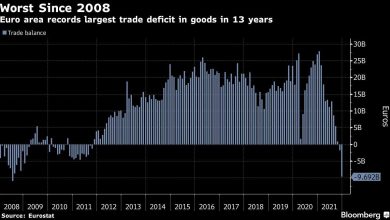Federal Reserve officials call for a measured response to inflation.

Federal Reserve officials are pushing back on the idea that central bankers might raise interest rates in between meetings and made it clear that while they are poised to begin lifting rates in March, the initial increase may be smaller than what investors have begun to expect.
Markets began to bet on a double-size rate increase — half a percentage point — after January inflation data came in surprisingly high last week. Those expectations grew after the Federal Reserve Bank of St. Louis president, James Bullard, suggested that the Fed might need to respond decisively with a large increase or even an inter-meeting move, something the central bank typically reserves for emergencies.
Mr. Bullard seemed to walk back his comments slightly on Monday, acknowledging during a CNBC interview that he is just one policy official and that the Fed chair, Jerome H. Powell, will lead on deciding how quickly to pull back support. He reiterated that he would like to see a rapid pace of increases, taking rates to about 1 percent by July — but he did not repeat that an increase in between meetings might be a good idea, saying instead said the Fed needs to react to data in an “organized” way.
“Our credibility is on the line here,” said Mr. Bullard, who votes on policy this year. Regional Fed presidents rotate in and out of four voting seats; the New York Fed president and Fed governors in Washington have a constant vote.
Mary C. Daly, president of the Federal Reserve Bank of San Francisco, said that the Fed needed to get moving, but that its approach ought to be “measured.”
“I see that it is obvious that we need to pull some of the accommodation out of the economy,” Ms. Daly said on “Face the Nation” on Sunday. “But history tells us with Fed policy that abrupt and aggressive action can actually have a destabilizing effect on the very growth and price stability we’re trying to achieve.”
Thomas Barkin, president of the Federal Reserve Bank of Richmond, similarly said in a SiriusXM interview on Monday that he favored raising rates “steadily.”
“I think it’s timely to get started, and steadily move back toward prepandemic levels,” Mr. Barkin said. He noted that while the Fed carried out its rate moves, it would get a better handle on whether inflation was beginning to settle down and could adjust the timing and pace of its moves accordingly.
The president of the Federal Reserve Bank of Kansas City, Esther George, pushed back on Mr. Bullard’s ideas even more bluntly. In an interview with The Wall Street Journal on Friday, she suggested that there would be a debate over a big rate increases in March but said she hadn’t yet settled on the idea, and underscored that moves between meetings were reserved for emergencies.
“I don’t know that I’d call the markets reacting to data an emergency here, because frankly, in my own forecast of looking where inflation was moving, the print was not a surprise,” she said.
Mr. Bullard acknowledged that he had yet to convince his colleagues that a relatively rapid pace of upcoming rate increases was appropriate.
“I think the path I’m mapping out is a good one,” he said on Monday.
Source link





